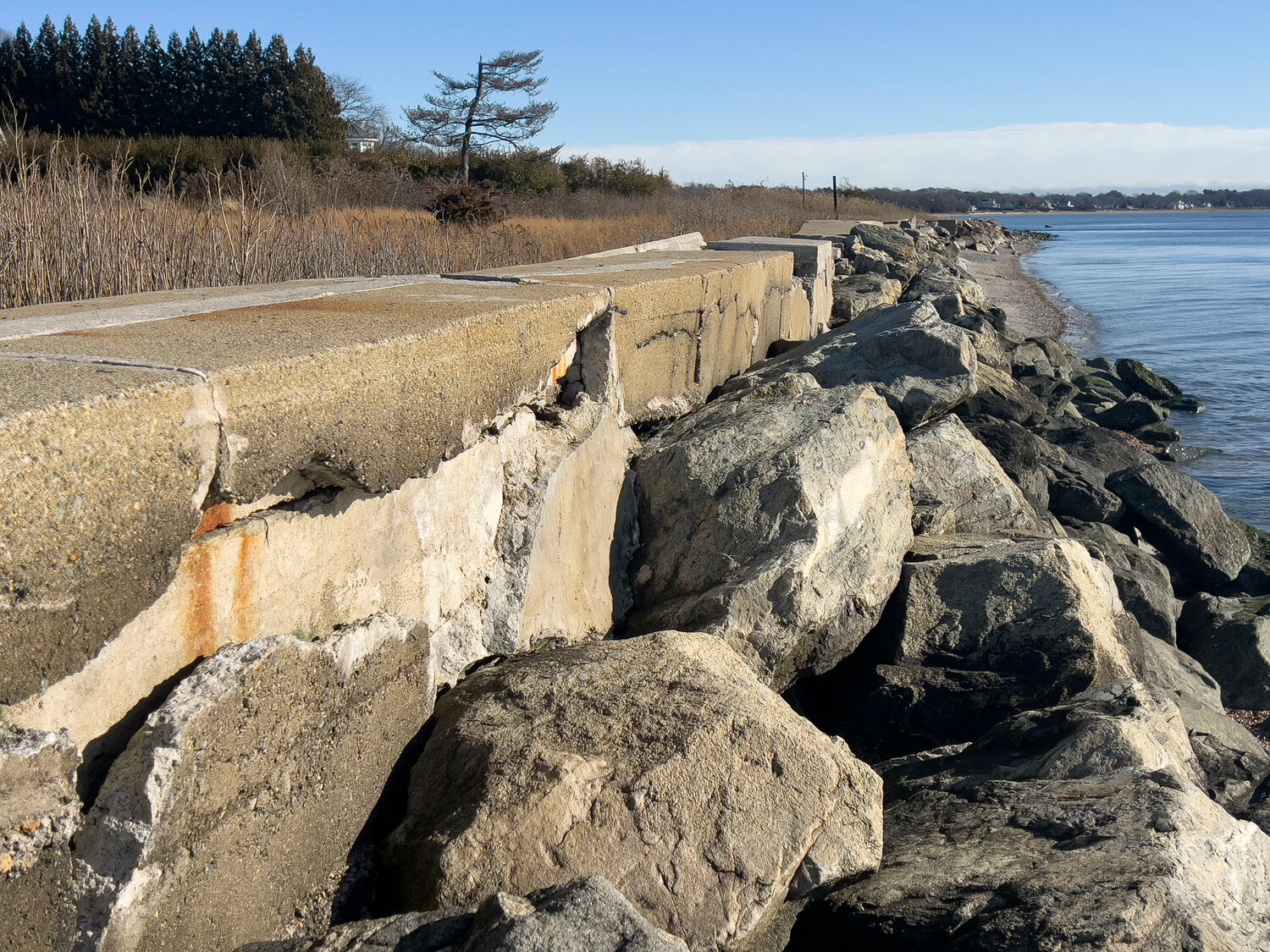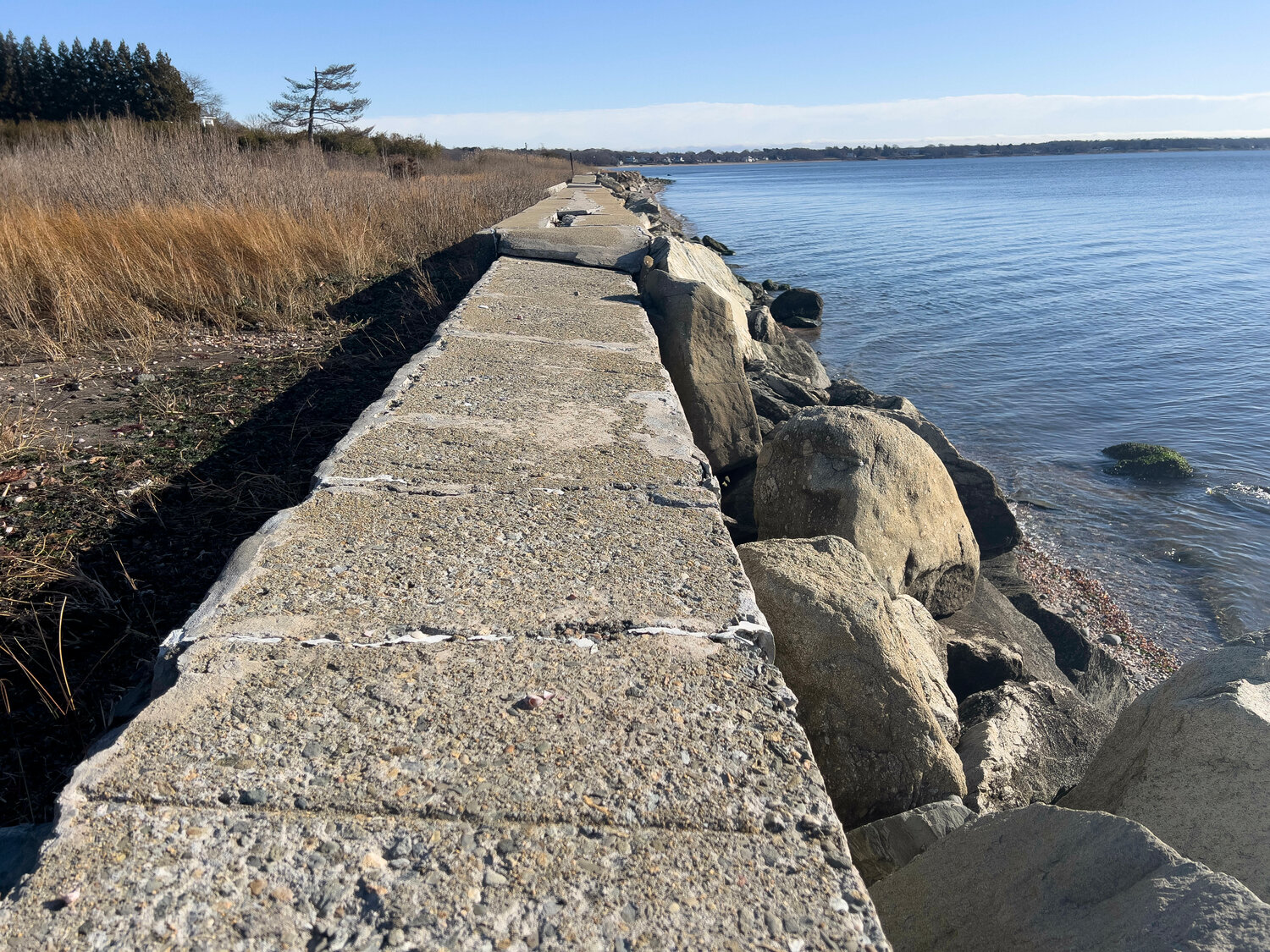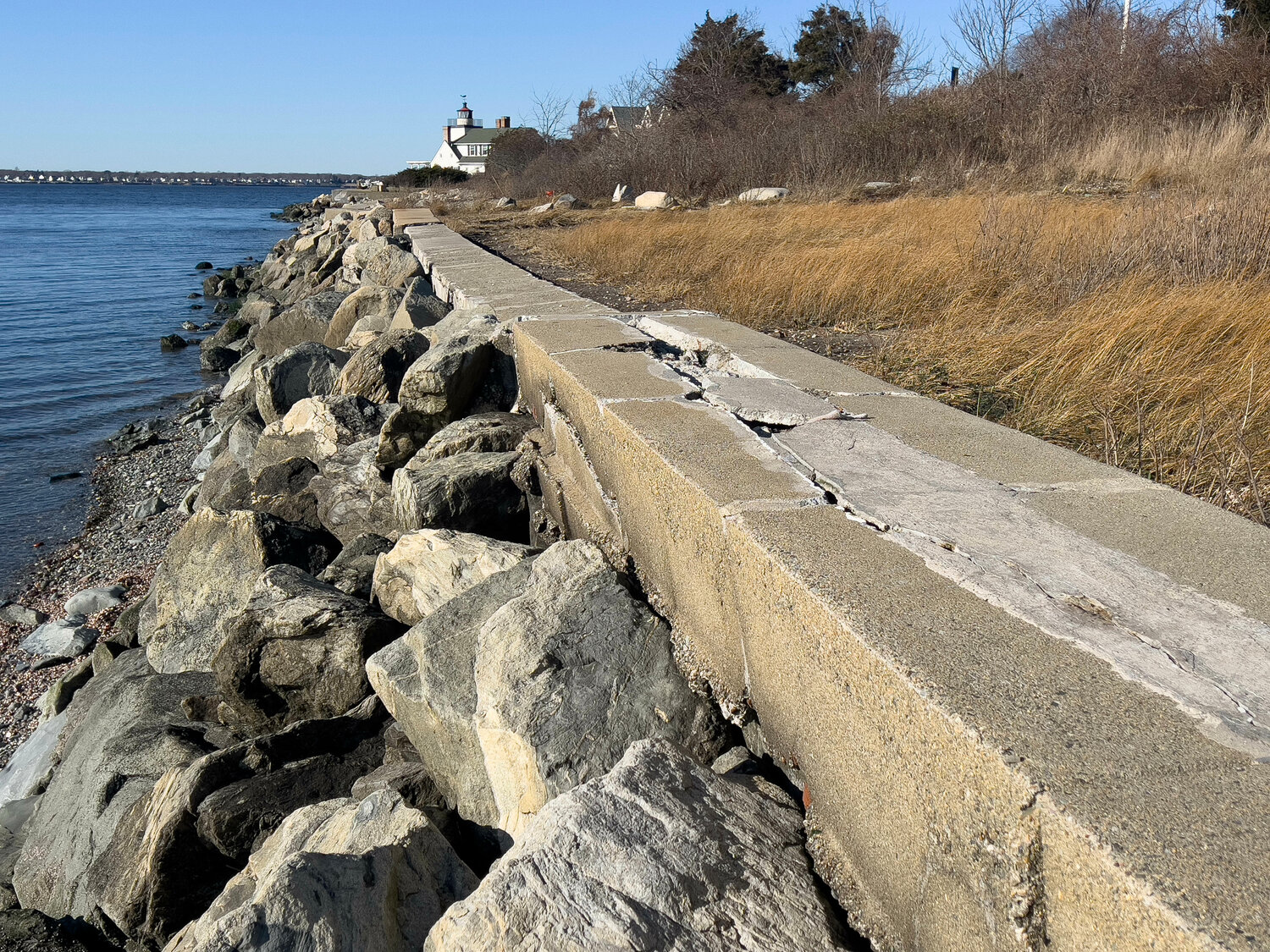CRMC: Public access allowed on Barrington seawall
Council says 1982 assent authorizes public access
CRMC recently voted to maintain public access along the seawall near the end of Elm Lane in Barrington.
During a hearing on Dec. 12, the Coastal Resources Management Council voted 5-2 to affirm …
This item is available in full to subscribers.
Please log in to continue |
Register to post eventsIf you'd like to post an event to our calendar, you can create a free account by clicking here. Note that free accounts do not have access to our subscriber-only content. |
Day pass subscribers
Are you a day pass subscriber who needs to log in? Click here to continue.
CRMC: Public access allowed on Barrington seawall
Council says 1982 assent authorizes public access
CRMC recently voted to maintain public access along the seawall near the end of Elm Lane in Barrington.
During a hearing on Dec. 12, the Coastal Resources Management Council voted 5-2 to affirm a 1982 assent that authorized a two-foot-wide public access walkway on top of the riprap retaining wall that runs along the southern edge of a property currently owned by Holly and Lance Sheffield.
CRMC also dismissed a cease and desist order it issued earlier against the Sheffields after they posted no trespassing signs, a chickenwire fence, an alarm, and, at times, a security guard, near the seawall.
The Sheffields, through their attorney Daniel Procaccini Jr., argued that the 1982 assent authorizing public access along the top of the seawall was “unenforceable” as it had never been recorded into the land evidence records in Barrington.
Procaccini said the Sheffields had followed the proper channels before purchasing the property — conducting a title search, speaking with Realtors, checking with the previous property owner. Procaccini said the Sheffields should not have been expected to check with various agencies, including the CRMC, about any pre-existing agreements. He said they had no knowledge of the 1982 assent, which was completed when a prior property owner, Robert and Mary Kilmarx, submitted an application to CRMC to repair the seawall.
Procaccini said the assent does not have any power, since it was not officially recorded.
CRMC members disagreed, as did their attorney, Mark Hartmann. He said the existence of a seawall on the property should have compelled the Sheffields, or any potential buyer, to check with state agencies for any restrictions, requirements, allowances or assents.
Hartmann also argued that an assent is a government permit that does not need to be recorded into land evidence files to remain valid and legal.
CRMC board members said they had not heard any evidence during the hearing that would extinguish the 1982 assent and the requirement for public access along the seawall.
CRMC member Catherine Robinson Hall said the coastline in Rhode Island, like most other natural resources, is highly regulated. Hall said that a manmade structure — referencing the seawall — did not just drop in from nowhere. She said the assent is valid and agreed that there was “constructive notice.”
Part of the motion, which was made by CRMC member Stephen Izzi, called for the assent to be recorded in land evidence records. He said someone needed to send it to the Town of Barrington.
Hall differed with the idea of recording the assent. She said it would open a Pandora’s Box and potentially undermine hundreds of other unrecorded assents. Hall said the action of recording the assent could undermine enforcement of other unrecorded assents.
In the end, Hall and Patricia Reynolds voted against the motion. Raymond Coia, Izzi, Donald Gomez, Kevin Flynn and Joseph Russolino voted in favor of the motion.
Seawall
Elm Lane is a narrow road that runs south off Nayatt Road near Nayatt Point, heading toward Narragansett Bay.
As Elm Lane approaches the water, it curves slightly and then ends in a small grassy area, abutting a concrete seawall that runs east toward the Rhode Island Country Club property. There are also riprap boulders abutting the seawall to the south, although they are covered with water at high tide.
For many years, people used the top of the seawall as a path connecting the end of Elm Lane with the beach beyond. But that changed shortly after the Sheffields purchased their home in 2021.
According to a Superior Court document, “Once they purchased 85 Nayatt Road, the Sheffields noticed members of the public using their seawall for walking and fishing along the water. The Sheffields built a wire fence and posted no trespassing signs along their portion of the seawall.”
In Sept. 2021, officials from CRMC issued the Sheffields a cease and desist order, directing them to remove the fences and the signs “because they blocked public access and altered the seawall without CRMC assent.”
The cease and desist order stated that failure to comply “shall be a violation of a duly adopted council regulation, and subject to all fines and penalties established by law.”
Months after CRMC issued the cease and desist order requiring that the public be allowed to cross the property atop the retaining wall, residents reported seeing a security guard stationed near the Elm Lane right of way.
“On May 2, 2022, a citizen e-mailed CRMC reporting that the Sheffields posted a security guard on the seawall and a siren was placed to sound an alarm whenever people attempted to walk on the wall,” stated the court document.
“On May 27, 2022, CRMC issued a second Cease and Desist Order, informing the Sheffields that they were violating the 1982 Assent and regulations of the Rhode Island Coastal Resources Management Program by preventing lateral public access along the seawall. The second Cease and Desist Order also informed the Sheffields that the seawall was improperly constructed because it did not have the required two-foot-wide access path along the top of the riprap.”
In Dec. 2022, the Sheffields filed a petition in Superior Court requesting a declaratory ruling.
“The Sheffields argued the 1982 Assent never was recorded and therefore is unenforceable against them as a matter of law because they are bona fide purchasers for value,” stated the court document.
CRMC failed to respond to the petition within the 60-day required time period.
“The Sheffields’ counsel followed up on March 8, 2023 and informed CRMC’s counsel that ninety days had passed since the petition was filed and the lack of a formal response from CRMC had caused the Sheffields significant prejudice,” stated the court document.
The Sheffields filed a complaint in Superior Court on March 10, 2023, seeking a declaration that the delay had “prejudiced the Sheffields’ substantial rights; that administrative review by CRMC would be futile because the petition presents questions of law; that the 1982 Assent is unenforceable as to them and their property; and to vacate the two Cease and Desist Orders.”
Late last month, a Superior Court judge ordered that CRMC respond to the Sheffields’ petition within 20 days.
That decision led to the hearing by CRMC earlier this month.
Hearing
CRMC’s legal counsel opened the Dec. 12 hearing with some background on the case. Hartmann said there was no statutory requirement that an assent be recorded.
Procaccini said the Sheffields had no knowledge of the assent when they purchased the property. He said there was nothing in the land evidence records. He said the real estate agents did not know about it, and a title examination did not reveal any assent.
Procaccini said a 2011 certificate from CRMC regarding other work on that property did not reference the 1982 assent.
He said the Sheffields did everything a reasonable purchaser would do when checking on the property.
Once they move in, however, they quickly discovered that people often crossed along the seawall when walking the length of the beach, and that fishermen used the spot as well.
Procaccini said his clients were concerned about their safety, with people coming and going night and day.
Procaccini later said there was no law requiring that potential buyers check with other various state agencies to see if there are assents or pre-existing agreements.
A CRMC member said anyone looking to purchase property along the coastline should check with the proper agencies. Procaccini did not agree.
There was some discussion about how the previous property owners were not aware of the assent. That detail should have been shared when the property changed hands, officials said.
Procaccini also said his clients had a previous conversation with a CRMC official after they saw people walking on the seawall. Procaccini said CRMC’s Tracy Silva told the Sheffields that the seawall was their private property.
A CRMC board member listed the reasons offered by Procaccini: First, that the Sheffields did not know about the assent, and second, that the assent should go away.
But if the assent goes away, he said, then permission to maintain the seawall goes away. The board member said the allowance for public access is a necessary consequence.
Procaccini said the assent does not need to be voided, just not enforced. He said the Sheffields would not have purchased the property if they had known about the 1982 assent.
The Sheffields offered testimony during the hearing. Holly Sheffield spoke about people having campfires near the seawall, and trash and beer bottles left in the area. She spoke about the CRMC official who earlier said the seawall was private property. She asked that CRMC find the assent unenforceable. Lance Sheffield mentioned a half-naked woman posing for selfies on the seawall with their property in the background. He said kids are partying down at the sea wall.
Later during the hearing, a CRMC member asked if the Sheffields could seek a modification to the assent. CRMC officials said they could.
Officials also agreed that whatever the decision of the CRMC on this matter, the case would likely be appealed in Superior Court.











